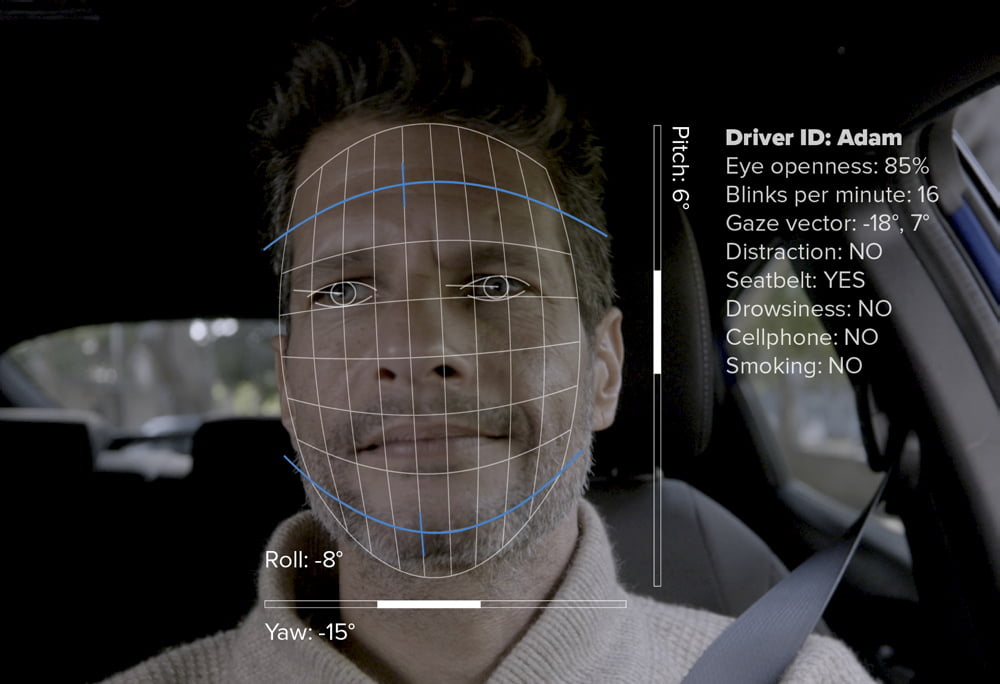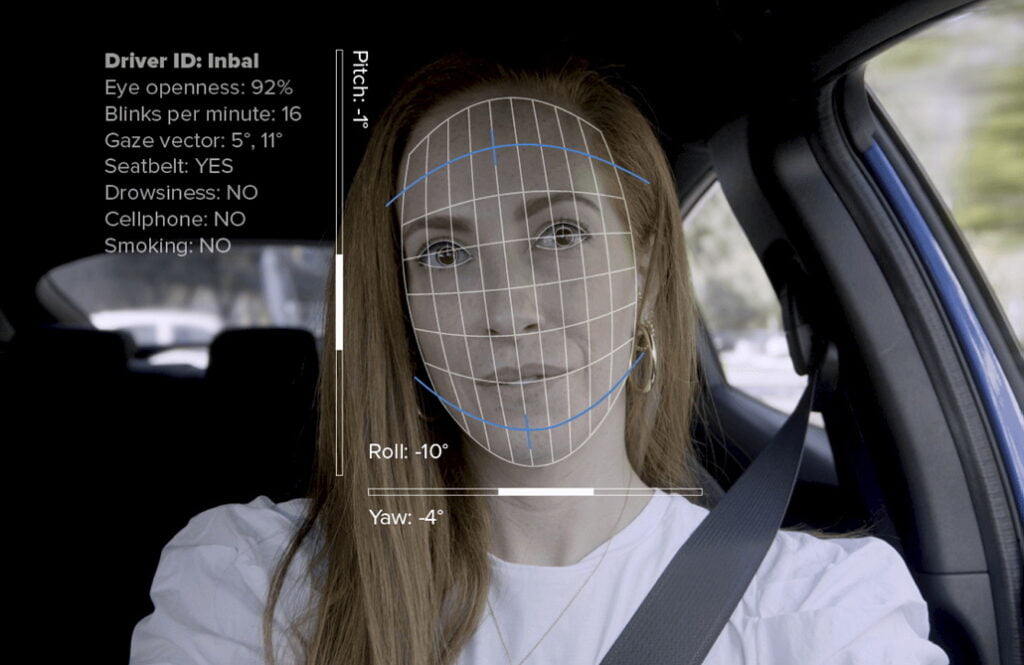AI-powered camera monitors blink rate and gaze direction for signs of distraction
A new generation of cars keeps an eye on you… to make sure you keep an eye on the road.
A tiny camera on the dashboard monitors every blink of the driver’s eyes to make sure they’re not drowsy or distracted.

It tracks the exact position and tilt of their face, the direction of gaze, eyelid activity, the rate and duration of every blink, how dilated their pupils are, how open their eyes are, whether their mouth is open, and more.
Using AI and computer vision, it is constantly watching out for signs of cell phone usage, seatbelt-wearing and smoking, and checking that the driver is actually focused on the road. If they’re not, it calls them out on it.
This is not the future. A driver monitoring system (DMS), developed by Cipia, an Israeli startup that holds over 70 patents in computer vision AI, has been built into cars that are on the road today.
Three manufacturers have already incorporated its Driver Sense technology into cars that are currently in production and two more have signed up. That brings to 25 the number of different car models using the system.
Among Cipia’s clients are SAIC Motors, the largest Chinese car manufacturer, which sells over 5 million a year, and Chery, also Chinese, which sold almost 1 million last year.
Driver Sense will be used in a Chery SUV, to be sold in Europe, South America, Australia, Middle East and Africa, with an expected start of production during late 2023. Cipia won’t identify its other clients, but says they include an electric car manufacturer in the US, and another leading car manufacturer in China.
“Despite all of the sophisticated safety systems that are already installed in vehicles and all of the things that happen on the road, the real danger lies behind the steering wheel,” Tal Krzypow, Vice President of Product of Cipia, tells NoCamels. “We’ve issued millions of alerts to prevent drivers from being distracted or falling asleep.”
Sign up for our free weekly newsletter
SubscribeThere are other companies that have developed driver monitoring systems, including Smart Eye and Seeing Machines.
But Cipia says that what sets it apart is that it requires relatively low processing power and camera specification, so manufacturers and fleets have to pay less overall. The lower price means its software can go into more vehicles.
Over a million people die every year due to distracted driving, says Krzypow. DMS has more than halved the number of accidents in some fleets. “Its contribution is very noticeable,” he says.
Drivers engage in at least one potentially distracted driving behavior n over 98 per cent of all journeys. And according to the US National Highway Traffic Safety Administration, 80 per cent of car accidents and 65 per cent of near-collisions involve some form of driver distraction, typically occurring within three seconds before the crash.
But things are starting to change. As of July 2022, new safety technology has become mandatory in European vehicles to protect passengers, pedestrians and cyclists. These include warnings of drowsiness and distraction.

The European Commission aims to save over 25,000 lives and prevent at least 140,000 serious injuries by 2038. Its long-term goal is to have zero fatalities by 2050 (“Vision Zero”).
In April 2021, The Stay Aware For Everyone (SAFE) Act of 2021 was introduced by the US Senate, requiring US regulators to mandate the installation of DMS to ensure motorists are engaged while using semi-autonomous driving systems. If the legislation is passed, every new car would need to adopt some version of the technology by 2027.
As for the future, Cipia plans to expand its technology into a new product called Cabin Sense, which will detect whoever is in the vehicle to customize their experiences, through automatically adjusting preferences such as infotainment functions, temperature, and volume.
Related posts

Editors’ & Readers’ Choice: 10 Favorite NoCamels Articles

Forward Facing: What Does The Future Hold For Israeli High-Tech?

Impact Innovation: Israeli Startups That Could Shape Our Future




Facebook comments